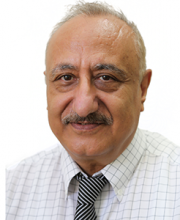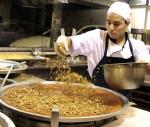You are here
How to save water in green buildings
Oct 24,2024 - Last updated at Oct 24,2024
Water conservation is a critical component of sustainable green building design, especially as global water resources become increasingly stressed, particularly in Jordan which is ranked as the second poorest in water resources and faces extreme water scarcity, with growing population, influx of refugees and limited renewable water sources exacerbating the issue. The U.S. Green Building Council’s Leadership in Energy and Environmental Design (LEED) certification, specifically LEED v4, for residential buildings offers a comprehensive framework for designing and operating green buildings that are water-efficient.
One of the key areas where buildings can save water is through landscaping. LEED v4 encourages the use of native or adaptive plants that require minimal irrigation, not green grass that needs a huge amount of water in our dry climate, particularly in summer when water supply is at its lowest. These plants are well-suited to the local climate and can thrive with natural rainfall, reducing the need for supplemental watering. Additionally, using efficient irrigation systems like drip irrigation or smart controllers that adjust watering schedules based on weather data can further decrease water consumption.
Water efficiency inside the building is another major focus of LEED v4. By installing low-flow fixtures, or water saving devices, such as on faucets, toilets, and showerheads, green buildings can significantly reduce water use. In Jordanian homes water used for flushing toilets alone can reach 40 per cent or more from the final water consumption. Considering that flushing water quality is treated to drinking standards in Jordan, a bigger issue comes up for debate, which is why we cannot use another sources of water for flushing? (May be treated grey water or moderate saline water). LEED v4 sets specific requirements for the water efficiency of these fixtures, often aiming for reductions of 20-50 per cent compared to standard baselines.
Recycling greywater (used water from sinks, showers and laundry) and capturing rainwater are effective strategies for reducing potable water demand. These non-potable water sources can be used for irrigation, toilet and flushing. LEED v4 supports the use of alternative water sources and provides credits for designs that minimise reliance on municipal water supplies. Also collecting rainwater for this purpose is an asset. Subsidizing black water treatment plants for house use is a big asset too, as it can be used to flush the toilets and irrigation, and thus reduce water demand in the country.
Accurate water metering is crucial for monitoring water use in the different facilities and identifying potential inefficiencies. LEED v4 encourages the installation of permanent water meters that track the consumption of different systems within the building, such as irrigation water, indoor plumbing, kitchen and flushing. This data can be used to optimize water use and detect leaks early. In Jordan, we lack enough data on this issue which is of prime importance for managing the water crisis.
Heating water can be a significant contributor to both energy and water losses in a building. LEED v4 promotes the use of efficient water heating systems that reduce energy demand and water waste. This can include tankless water heaters, which heat water on demand, or replacing electric water heaters with solar water heating systems that utilise renewable energy, along with solving the issue of loosing cold water in pipes during winter while waiting for the warm water to arrive.
Ongoing management and optimisation are essential for maintaining water efficiency. LEED v4 encourages regular water audits to assess system performance, identify leaks, and make adjustments as necessary, particularly for big water consumers, which ought to be monitored by the government. Audits can also provide insights into how water use patterns change over time, and consumer type allowing for proactive management.
Saving water in a green building is not only about implementing individual technologies or strategies, it is about adopting a holistic approach to water management that considers the entire lifecycle of water within the building. Human behavior is important too as we can teach greener habits in dealing with water consumption, starting from school.
In conclusion, LEED v4 offers a robust framework for achieving water efficiency, guiding building owners and operators toward sustainable practices that conserve water, reduce costs, and contribute to the overall health of the environment. By adhering to these guidelines, green buildings can significantly reduce their water footprint, aligning with broader goals of sustainability and resource conservation.











Add new comment